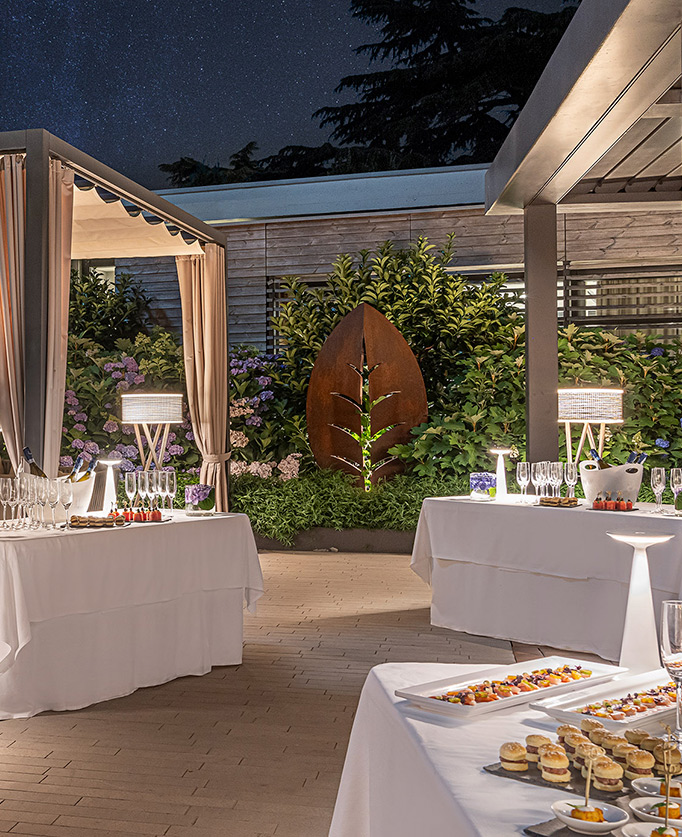

La Dolce Vita Italiana is one of the most famous expressions in the world and refers to the Italian way of living. It is a lifestyle characterized by a passion for good food, fashion, art, and culture, as well as conviviality and a joy for life.
It is a concept that evokes romance, glamour, elegance, and luxury. It has become a cultural icon that represents the best of Italian life. But what does it mean to live the Italian Dolce Vita, where does it come from, and why is it so famous? Let’s find out!
But how was La Dolce Vita born?
The term “Dolce Vita” was coined in the 1960s to describe the carefree and free atmosphere that characterized post-war Italy. During those years, the country was experiencing a period of great change, with the birth of the economic boom and the arrival of new cultural trends.
When we talk about Dolce Vita, we are referring to the historical period involving Rome and Italy in general between the late 1950s and early 1960s. In the capital, fresh from the post-war economic boom, the desire to live and savor the beauty, fun and culture of one of the most wonderful cities in the world exploded.
It is precisely in this period of economic and cultural prosperity that Cinecittà becomes an important center of film production, attractive both for its lower costs compared to Hollywood and for the Italian law, which at the time was advantageous for the big film studios. This attracted producers, directors, and actors, as well as aspiring artists and intellectuals in search of success. This is what the Italian Dolce Vita represented at its birth: a social phenomenon so attractive and widespread that it inspired Federico Fellini’s masterpiece of the same name, released in 1960. The term “Dolce Vita” seems to have been coined by the director himself, whose film “La Dolce Vita” has become the emblem of this golden age.
The symbolic event of the Dolce Vita: the Rugantino party and the striptease scandal
The event still associated today with the birth of La Dolce Vita is the private party of Countess Olghina di Robilant, held in 1958 at Rugantino in Trastevere. That day, instead of Federico Fellini and Giulietta Masina, Anita Ekberg appeared among the guests, surrounded by journalists and photographers, accompanied by dancer Aïché Nana, who improvised a cheerful and carefree striptease.
Despite the ban on photography, some images of the dancer in déshabillé were handed over by Tazio Secchiaroli to L’Espresso, causing a great scandal due to the distorted reconstruction of events reported by the media. However, the meaning of these photographs changed over time to become the symbol of La Dolce Vita in the collective imagination.
Starting from the cultural and intellectual ferment of the time, the Italian Dolce Vita is a concept that has evolved and is not limited to cinema and social life. Instead, it evokes a rich sequence of images, from art to culture, to the Italian lifestyle, and naturally to traditional Italian cuisine. And it goes beyond that.
La Dolce Vita is not just glamour and luxury: it is also the simplicity of everyday life, made up of small things that make it unique and unforgettable. The crystal-clear sea, white beaches, festivals and popular celebrations, good food, and good wine are just some of the experiences that are part of the Italian Dolce Vita.
It is a lifestyle with a unique flavor, difficult to translate into words. It consists of the Italian love for life, which finds its foundations in food, literature, art, culture, and tradition. La Dolce Vita was an era that will never return, but it is still possible to relive that magic by walking through the streets of Italian cities, admiring their beauties, and experiencing the atmosphere live.
In short, La Dolce Vita is an attitude that celebrates the pleasure of the senses, the love for beauty, and the culture of good food.
The Italian Dolce Vita is associated with a series of characteristics that reflect the best of Italian culture and lifestyle. Here are some of the main ones:
Traditions of La Dolce Vita
The Italian Dolce Vita is also associated with a series of traditions and festivities that are part of Italian culture. Among the most famous are the Venice Carnival, the Sanremo Italian Song Festival, Italian Republic Day, and Ferragosto.
There are also simpler Italian traditions that reflect the Dolce Vita, such as the “passeggiata“: a uniquely Italian custom that consists of an evening walk through the city’s center streets, where people socialize and enjoy the city’s beauty. Or the “aperitivo,” another Italian tradition associated with the Dolce Vita, consisting of a pre-dinner drink accompanied by tasty snacks, a moment of relaxation and conviviality where people gather to be in company.
In conclusion, the Italian Dolce Vita represents the best of Italian culture, from its traditions and festivities to its art, culture, and lifestyle. It is a unique way of life in the world that has fascinated and continues to fascinate. If you travel to Italy, don’t miss the opportunity to experience the Italian Dolce Vita and discover all its wonders!